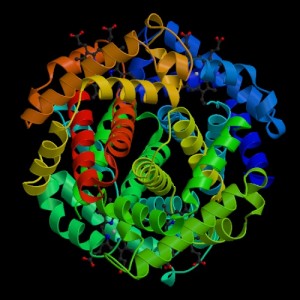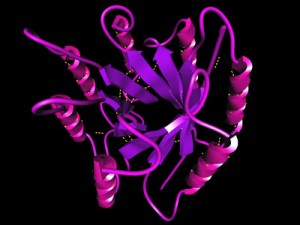IBM’s Blue Gene exploring Protein Folding mystery
IBM’s Blue Gene project has resulted in a new frontier in the Super computing arena. Blue Gene systems are being employed by scientists and researchers worldwide to find solutions and run applications for the benefit of the mankind. Blue Gene systems are being extensively used to find out the mysteries behind Protein folding and Molecular Dynamics.

The Blue Gene/L machine was designed and built in collaboration with the US Department of Energy’s NNSA/Lawrence Livermore National Laboratory in California. The LLNL system has a peak speed of 596 Teraflops.
Proteins are strings of amino acids with long, linear chains. Like shoelaces, these chains loop about each other in a variety of ways (i.e., they fold). But, as with a shoelace, only one of these many ways allows the protein to function
properly. A misfolded protein can actually poison the cells around it.
Researchers believe that many of the major human diseases like the Alzheimer’s disease, Cystic Fibrosis and Mad cow disease are apparently results of protein folding gone wrong.
Protein biochemists are trying hard to discover how a completely unfolded protein, with hundreds of millions of potential folded states to choose from, consistently found the correct oneand did so within seconds to minutes. The key to research is to find a small molecule, a drug that can either stabilize the normally folded structure or disrupt the pathway that leads to a misfolded protein.

Computer simulations of biomolecular processes such as protein folding can be carried out using techniques spanning a broad range of sophistication in modeling the basic physical processes and spanning a broad range in computational cost.
The computational effort required to study protein folding is enormous. Using crude workload estimates for a petaflop/second capacity machine leads to an estimate of three years to simulate 100 microseconds.
| Physical time for simulation | 10–4 seconds |
| Typical time-step size | 10–15 seconds |
| Number of MD time steps | 1011 |
| Atoms in a typical protein and water simulation | 32000 |
| Approximate number of interactions in force calculation | 109 |
| Machine instructions per force calculation | 1000 |
| Total number of machine instructions | 1023 |
Comments Leave a Comment
Comments are closed.

I think you are thinking like sukrat, but I think you should cover the other side of the topic in the post too…
I am amazed with it. It is a good thing for my research. Thanks